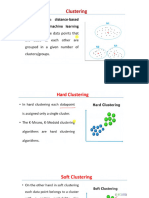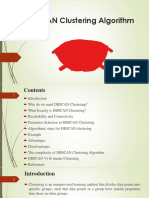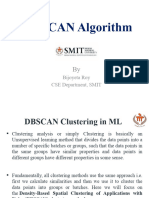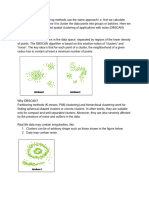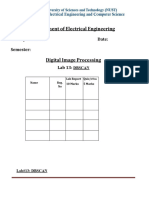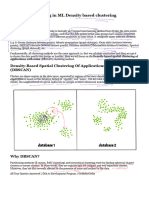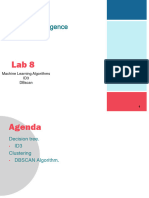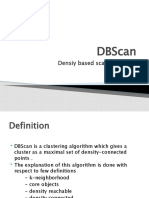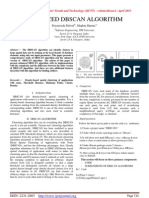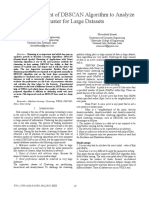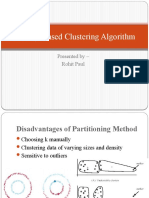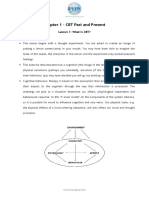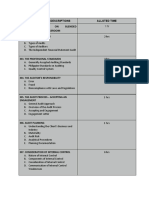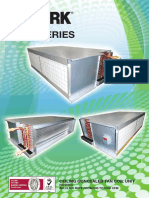0% found this document useful (0 votes)
7 views9 pagesUnit IV Unsupervised Learning 73 81
DBSCAN (Density-Based Spatial Clustering of Applications with Noise) is a clustering algorithm that identifies dense regions in data without requiring the number of clusters to be specified in advance. It classifies points into core points, border points, and noise points based on their density and proximity to other points. The algorithm involves selecting parameters, examining neighborhoods, expanding clusters, and finalizing the classification of points after processing the entire dataset.
Uploaded by
ap6859343Copyright
© © All Rights Reserved
We take content rights seriously. If you suspect this is your content, claim it here.
Available Formats
Download as PDF, TXT or read online on Scribd
0% found this document useful (0 votes)
7 views9 pagesUnit IV Unsupervised Learning 73 81
DBSCAN (Density-Based Spatial Clustering of Applications with Noise) is a clustering algorithm that identifies dense regions in data without requiring the number of clusters to be specified in advance. It classifies points into core points, border points, and noise points based on their density and proximity to other points. The algorithm involves selecting parameters, examining neighborhoods, expanding clusters, and finalizing the classification of points after processing the entire dataset.
Uploaded by
ap6859343Copyright
© © All Rights Reserved
We take content rights seriously. If you suspect this is your content, claim it here.
Available Formats
Download as PDF, TXT or read online on Scribd
/ 9



